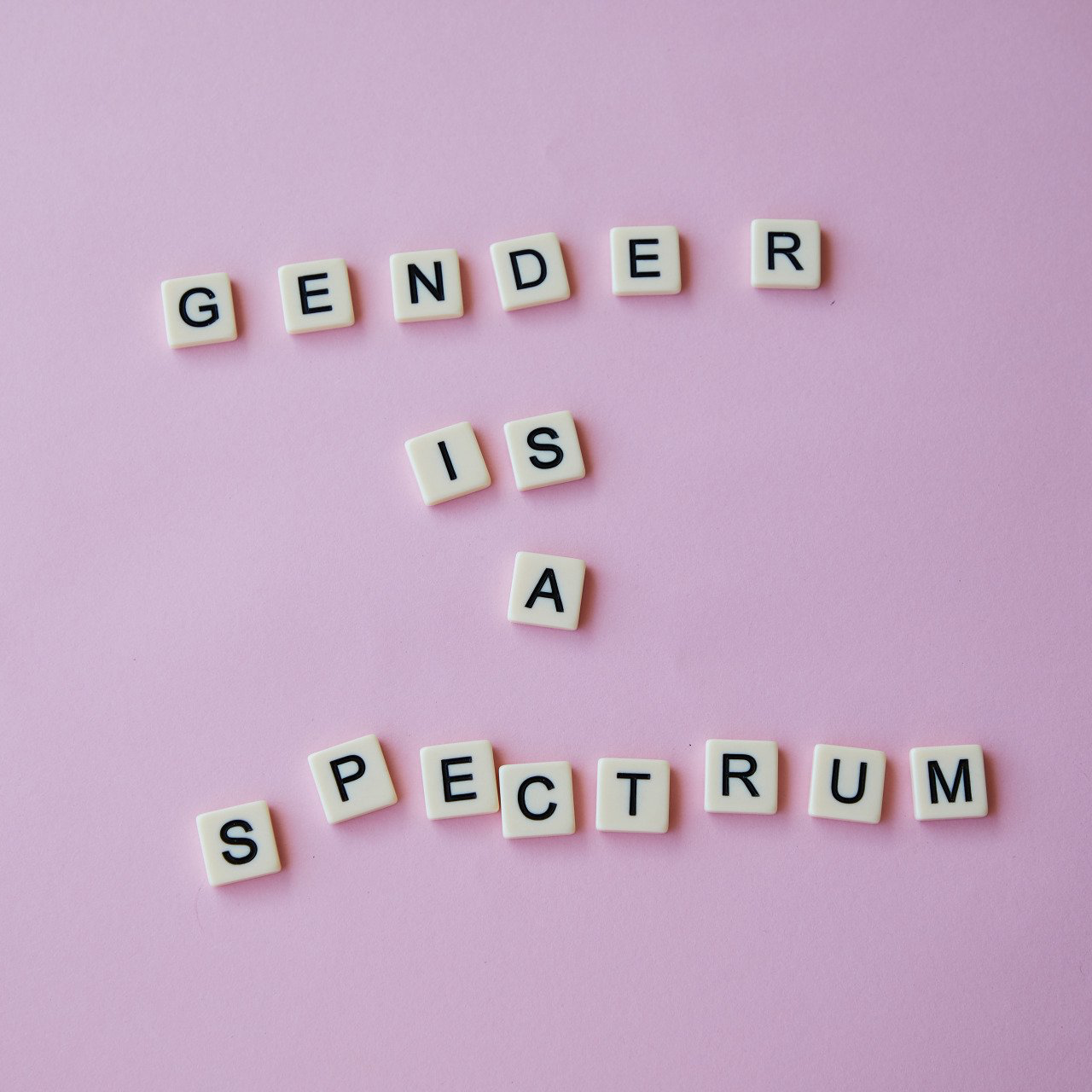Removal of the body hair
When transforming from a man to a woman, most want smooth and soft skin all over the body - to achieve this, the hair must be removed.
The removal of body hair is usually not the same challenge,
as that of facial hair. Transsexuals who meet the treatment requirements for permanent hair removal with the diode laser usually get rid of their unwanted hair quickly. You can either have the whole body treated, or individual parts of the body.

TRANSSEXUALITY
and permanent hair removal
Removal of the body hair
When transforming from a man to a woman,
most want smooth and soft skin all over the body - to achieve this, the hair must be removed.
The removal of body hair is usually not the same challenge as that of facial hair.
Transsexuals who meet the treatment requirements for permanent hair removal with the diode laser usually get rid of their unwanted hair quickly.
You can either have the whole body treated, or individual parts of the body.

Hair free into a new life
If a man is diagnosed with transsexuality, then it sometimes takes a very long time until it actually comes to the sex change. If you decide to do so, in addition to the surgical procedures and hormone treatment, body hair must also be removed, especially from the face. To avoid that the beard shadow that develops after a shave permanently burdens the new life as a woman, for most transsexuals the first step is to remove the beard permanently.
Hair free into a new life
If a man is diagnosed with transsexuality, then it sometimes takes a very long time until it actually comes to the sex change. If you decide to do so, in addition to the surgical procedures and hormone treatment, body hair must also be removed, especially from the face. To avoid that the beard shadow that develops after a shave permanently burdens the new life as a woman, for most transsexuals the first step is to remove the beard permanently.
Permanent hair removal of the beard
In order to eliminate the beard shadow promptly, the hair is permanently removed with high-frequency diode laser light energy.

Permanent hair removal of the beard
In order to eliminate the beard shadow promptly, the hair is permanently removed with high-frequency diode laser light energy.
Gender Transformation:
When to start with permanent hair removal?
Specialists advise to not start too late with permanent hair removal during gender transformation. But also not too early, because the opposite-sex hormone therapy can also affect hair growth. However, complete regression of facial hair is not to be expected. It is best to start hair removal eight to twelve weeks after taking the first hormones. I will gladly advise you free of charge on the subject of permanent hair removal with the diode laser.

Gender Transformation:
When to start with permanent hair removal?
Specialists advise to not start too late with permanent hair removal during gender transformation. But also not too early, because the opposite-sex hormone therapy can also affect hair growth. However, complete regression of facial hair is not to be expected.
It is best to start hair removal eight to twelve weeks after taking the first hormones. I will gladly advise you free of charge on the subject of permanent hair removal with the diode laser.
DEFINITELY
hair free
MAXIMUM RESULT
6 - 8+ treatments
ALL
skin types
MAXIMUM COMFORT
due to an integrated contact cooling system on the handpiece of the laser head
FormaTK Spark Pro
the premium class among
the laser devices
CERTIFIED
with ISO-standard, medical CE- and FDA-approval
FAQs
You have a question?
Find the answer in the FAQs
or book a free consultation
-
Is diode laser treatment suitable for me?
The SparkPro diode laser is suitable for all skin types, hair types and body parts.
-
What is the difference between IPL devices and diode lasers?
Both work on the principle of photothermolysis, but the diode laser is much stronger and focuses more on the hair / hair root. The surrounding skin is less affected than with IPL treatment. The risk of burns and possible scars is much lower with a diode laser. The diode laser can also be used safely on dark or tanned skin. It also requires far fewer treatments.
-
Your benefits at ADAM | EVE aesthetics
ADAM | EVE aesthetics uses the latest laser from Forma TK, one of the world's most experienced manufacturers of aesthetic laser systems. This method is successfully used by many doctors and studies have proven its effectiveness. Many salons still work with IPL technology or with very cheap laser devices from Asia.
The new SparkPro diode laser has much more power and offers many treatment options for faster and more comfortable treatment. It is also suitable for tanned or very dark skin. The latest technology offers many benefits without discomfort or skin damage and with optimal results, even for finer or lighter hair.
-
How does laser hair removal work?
The melanin (pigment in the hair) is heated by a short but high-energy light pulse. Melanin converts light energy into heat and thus heats the hair follicle from the inside. The protein structures of the hair roots "stick together" and the growth cells are destroyed. The hair root is destroyed without irritating the skin.
-
What do I feel during the treatment?
Due to the selective and very short heating of the skin, the treatment is almost painless. During the treatment, the skin is cooled so that most people feel little more than a slight stinging or tingling sensation. However, the sensation of pain is individual and varies depending on the body zone or the " mood of the day ".
-
Which parts of the body can be treated?
Face, upper and lower body, private area, beard and hairline. Virtually all easily accessible parts of the body can be treated.
-
Which result can I expect?
After several treatments, the density of the hair is significantly reduced in most cases. The rest of the hair is thin and light and therefore hardly visible. In many cases, permanent hair removal is achieved.
-
Is all hair suitable for laser treatment?
The treatment can be performed on all hair that contains enough pigment (melanin). The treatment is particularly effective on dark hair due to the high content of eumelanin (black-brown pigment) in the hair. Light blond and very fine hair as well as red hair usually do not react or hardly react to laser therapy. They mainly contain pheomelanin (red-yellow pigment), which absorbs light very poorly.
-
Can tanned or dark skin also be treated?
Yes. After prior consultation, the appropriate treatment method is selected and an individual treatment concept is created. An automatic skin analysis is performed with a melanin meter, which determines the exact pigmentation of the skin surface to be treated.
-
Am I hair free forever?
In the process of life, sporadic hairs may grow back from time to time. Every person has about 5 million hair root plants at birth, of which only a part is active at the time of treatment. During laser treatment, only the active hair roots can be destroyed. If sporadic hair grows back after years (e.g. due to hormonal reasons), these hair roots were not active at the time of treatment and therefore could not be removed in previous treatments. I recommend one treatment per year to maintain the hair-free result.
-
How long does a treatment take and how many sessions do I need?
The duration and cost of permanent hair removal depends on the part of the body to be treated, hair color, density and texture. Several sessions are always required. 6 - 8 treatments are realistic. It can be less, but also more, so a personal consultation is always necessary in advance.
-
Why are multiple treatments necessary?
Only 10-20% of hair can be removed per session. The reason is that our hair grows cyclically in three phases. They are formed, develop, grow and fall out.
The treatment is effective only on hairs that are at the end of their growth. Only at this stage the hair connects the skin surface with the hair root. However, at this particular time, only about 10-20% of body hair is in this growth phase, so the treatment must be repeated 6-8 times.
-
At what intervals do the treatments take place?
Depending on the part of the body to be treated and individual hair growth, there should be at least 4 - 10 weeks between sessions to treat as many hairs as possible in the growth phase. As a result of the treatment, hair growth changes and the remaining hair grows more slowly. The intervals between treatments are also adjusted individually to each client.
-
Are the results visible immediately?
Depending on the body region, hair loss lasts between 10 and 20 days. Your hair will continue to grow normally until then. Please be patient! The hair root is irreparably damaged by the high-energy light. Unfortunately, this is not visible from the outside. The hair is separated from the hair root and falls out slowly (10 -20 days).
-
What should I pay attention to before the treatment?
The hair should be as short as possible and shaved during the treatment (2-3 days before) to ensure comfortable and effective hair removal. It is important that the hair is not plucked beforehand to ensure heat conduction from the surface to the hair root.
-
What should I pay attention to after the treatment?
Before and after each treatment (at least 7 days), intensive sunbathing or solarium visits should be avoided to prevent skin irritation and redness. Otherwise, safe and comfortable treatment may be affected. To prevent unwanted pigmentary shifts, the skin should be provided with a sun protection factor 30 (or higher) even after the treatment.
-
What side effects may occur?
The energy acting on the skin may cause a slight redness or burning sensation. Depending on the color and density of the hair, small wheals may appear, but they quickly disappear. The diode laser is a very skin-friendly and safe method for permanent hair removal. A careful consultation will reduce the side effects to an absolute minimum.
FAQs
You have a question?
Find the answer in the FAQs
or book a free consultation
-
Is diode laser treatment suitable for me?
The SparkPro diode laser is suitable for all skin types, hair types and body parts.
-
What is the difference between IPL devices and diode lasers?
Both work on the principle of photothermolysis, but the diode laser is much stronger and focuses more on the hair / hair root. The surrounding skin is less affected than with IPL treatment. The risk of burns and possible scars is much lower with a diode laser. The diode laser can also be used safely on dark or tanned skin. It also requires far fewer treatments.
-
Your benefits at ADAM | EVE aesthetics
ADAM | EVE aesthetics uses the latest laser from Forma TK, one of the world's most experienced manufacturers of aesthetic laser systems. This method is successfully used by many doctors and studies have proven its effectiveness. Many salons still work with IPL technology or with very cheap laser devices from Asia.
The new SparkPro diode laser has much more power and offers many treatment options for faster and more comfortable treatment. It is also suitable for tanned or very dark skin. The latest technology offers many benefits without discomfort or skin damage and with optimal results, even for finer or lighter hair.
-
How does laser hair removal work?
The melanin (pigment in the hair) is heated by a short but high-energy light pulse. Melanin converts light energy into heat and thus heats the hair follicle from the inside. The protein structures of the hair roots "stick together" and the growth cells are destroyed. The hair root is destroyed without irritating the skin.
-
What do I feel during the treatment?
Due to the selective and very short heating of the skin, the treatment is almost painless. During the treatment, the skin is cooled so that most people feel little more than a slight stinging or tingling sensation. However, the sensation of pain is individual and varies depending on the body zone or the " mood of the day ".
-
Which parts of the body can be treated?
Face, upper and lower body, private area, beard and hairline. Virtually all easily accessible parts of the body can be treated.
-
Which result can I expect?
After several treatments, the density of the hair is significantly reduced in most cases. The rest of the hair is thin and light and therefore hardly visible. In many cases, permanent hair removal is achieved.
-
Is all hair suitable for laser treatment?
The treatment can be performed on all hair that contains enough pigment (melanin). The treatment is particularly effective on dark hair due to the high content of eumelanin (black-brown pigment) in the hair. Light blond and very fine hair as well as red hair usually do not react or hardly react to laser therapy. They mainly contain pheomelanin (red-yellow pigment), which absorbs light very poorly.
-
Can tanned or dark skin also be treated?
Yes. After prior consultation, the appropriate treatment method is selected and an individual treatment concept is created. An automatic skin analysis is performed with a melanin meter, which determines the exact pigmentation of the skin surface to be treated.
-
Am I hair free forever?
In the process of life, sporadic hairs may grow back from time to time. Every person has about 5 million hair root plants at birth, of which only a part is active at the time of treatment. During laser treatment, only the active hair roots can be destroyed. If sporadic hair grows back after years (e.g. due to hormonal reasons), these hair roots were not active at the time of treatment and therefore could not be removed in previous treatments. I recommend one treatment per year to maintain the hair-free result.
-
How long does a treatment take and how many sessions do I need?
The duration and cost of permanent hair removal depends on the part of the body to be treated, hair color, density and texture. Several sessions are always required. 6 - 8 treatments are realistic. It can be less, but also more, so a personal consultation is always necessary in advance.
-
Why are multiple treatments necessary?
Only 10-20% of hair can be removed per session. The reason is that our hair grows cyclically in three phases. They are formed, develop, grow and fall out.
The treatment is effective only on hairs that are at the end of their growth. Only at this stage the hair connects the skin surface with the hair root. However, at this particular time, only about 10-20% of body hair is in this growth phase, so the treatment must be repeated 6-8 times.
-
At what intervals do the treatments take place?
Depending on the part of the body to be treated and individual hair growth, there should be at least 4 - 10 weeks between sessions to treat as many hairs as possible in the growth phase. As a result of the treatment, hair growth changes and the remaining hair grows more slowly. The intervals between treatments are also adjusted individually to each client.
-
Are the results visible immediately?
Depending on the body region, hair loss lasts between 10 and 20 days. Your hair will continue to grow normally until then. Please be patient! The hair root is irreparably damaged by the high-energy light. Unfortunately, this is not visible from the outside. The hair is separated from the hair root and falls out slowly (10 -20 days).
-
What should I pay attention to before the treatment?
The hair should be as short as possible and shaved during the treatment (2-3 days before) to ensure comfortable and effective hair removal. It is important that the hair is not plucked beforehand to ensure heat conduction from the surface to the hair root.
-
What should I pay attention to after the treatment?
Before and after each treatment (at least 7 days), intensive sunbathing or solarium visits should be avoided to prevent skin irritation and redness. Otherwise, safe and comfortable treatment may be affected. To prevent unwanted pigmentary shifts, the skin should be provided with a sun protection factor 30 (or higher) even after the treatment.
-
What side effects may occur?
The energy acting on the skin may cause a slight redness or burning sensation. Depending on the color and density of the hair, small wheals may appear, but they quickly disappear. The diode laser is a very skin-friendly and safe method for permanent hair removal. A careful consultation will reduce the side effects to an absolute minimum.




